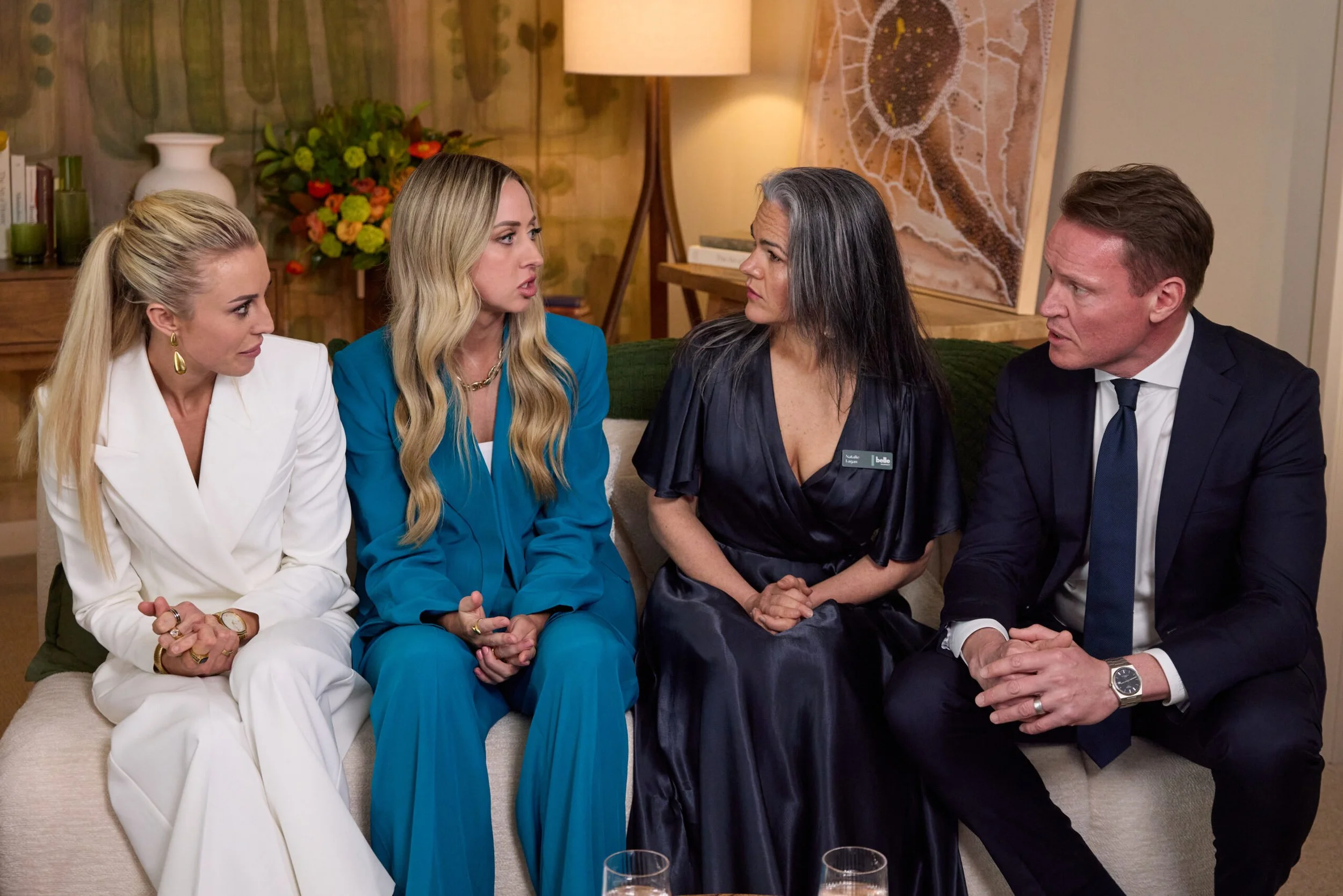What a Ride! The Block 2025!
LOCATION, LOCATION, LOCATION – THE BLOCK DILEMMA
Every year, The Block captures Australia’s attention, the renovations, the design drama, and the high-stakes auction day. But in the most recent season which featured 5 new builds in Daylesford, Victoria, the final results told a story that’s less about construction quality and more about location, pricing, and buyer perception.
As Holmes & Co’s David Holmes explains, even the best auction process can’t overcome a mismatch between property location and buyer expectations.
The Daylesford Dilemma: Luxury Homes in a Sub-$1 Million Market
Daylesford is known for its spa culture, weekend escapes and boutique tourism, but it’s not a high-end luxury property market. With a median house price sitting under $1 million, the decision to list five newly built homes on the same street, all with reserve prices exceeding $3 million, placed the season’s contestants in a challenging position from the outset.
While the homes were beautifully finished and showcased architectural creativity, they entered the market at a level that didn’t align with local buyer demographics or investor confidence.
Holmes notes that buyer psychology and local context are crucial auction variables.
“You can have an incredible property and still face resistance if the price point doesn’t fit the local narrative,” he explains. “Auctions work best when they reflect what buyers in that market value and what they’re prepared to compete for.”
Over-Saturation on Auction Day
Another factor impacting results was volume. Five luxury homes, in the same street, going to auction simultaneously, effectively competed against each other. In a smaller market like Daylesford, where genuine buyers at that price point are limited, this setup diluted competition the very ingredient that fuels successful auctions.
Instead of generating excitement, the simultaneous sales may have fragmented the buyer pool and created hesitation among investors questioning long-term capital growth potential in a sub-$1 million median market.
Holmes & Co’s auction philosophy reinforces that competition is king — but only when supply, price, and buyer demand align.
Returning to The Block’s Origins Could Restore Auction Magic
When The Block began, its appeal was in budget-conscious renovations in sought-after urban locations, projects that mirrored what every day Australians dream of achieving: adding value through smart, realistic design choices.
Back then, the auctions were relatable. Buyers saw themselves in the contestants, and the properties were priced within reach of larger audiences. The results reflected genuine market momentum, not just luxury spending.
Holmes suggests a return to that formula could reignite the show’s auction-day success:
“When the project aligns with an active buyer segment, especially first or second home buyers, auctions thrive. People compete emotionally and financially when they can actually see themselves living there.”
What the Industry Can Learn
For agents, vendors, and developers, The Block’s Daylesford experience is a reminder that location and pricing strategy must always lead the campaign. No amount of marketing or design flair can replace local demand fundamentals.
Know your buyer pool - Does the price point reflect real local or lifestyle-driven demand?
Avoid oversupply in small markets - Multiple listings at similar price points reduce competitive pressure.
Align your auction strategy with buyer psychology - Success depends on emotion, urgency, and attainable aspiration.
This reality certainly came into sharp focus when David Holmes was tasked with calling the auction for contestants Han and Can. Despite weeks of marketing and anticipation, no registered bidders were present when the auction began - a confronting scenario on national television.
But rather than let the moment fall flat, Holmes demonstrated the discipline, calm, and strategy that define an experienced auctioneer.
He completed the auction process professionally, allowing the contestants and audience to see that the integrity of the auction still stood, even in challenging circumstances.
After the cameras stopped rolling, Holmes, the Belle Property team alongside Han and Can will work strategically to negotiate post-auction, opening up conversations with potential buyers, repositioning expectations, and guiding the contestants through what can often be a complex next phase.
“When there are no registered bidders, that doesn’t mean there’s no opportunity,” Holmes explains. “It becomes about pivoting - understanding the feedback, refining the offer, and finding the right buyer in the right timeframe.”
It is a moment that highlighted both the resilience of the auction process and the professionalism required to navigate tough market conditions.
Final Comments
Daylesford’s beauty and charm made for great television, but in real-world market terms, it was always going to test buyer appetite. With the median house price under $1 million, listing five luxury homes above $3 million each created a fundamental disconnect between product and market.
As David Holmes of Holmes & Co points out, even the best auctioneer can’t manufacture competition where demand doesn’t exist. The key is always in understanding your market, positioning correctly, and creating competition through accessibility.
Perhaps the show’s next evolution lies not in grander homes, but in returning to relatable renovations in high-demand suburbs - where more Australians can see themselves bidding, buying, and living.
👉 If you’d like to work with an award-winning auctioneer team we would love to hear from you.

